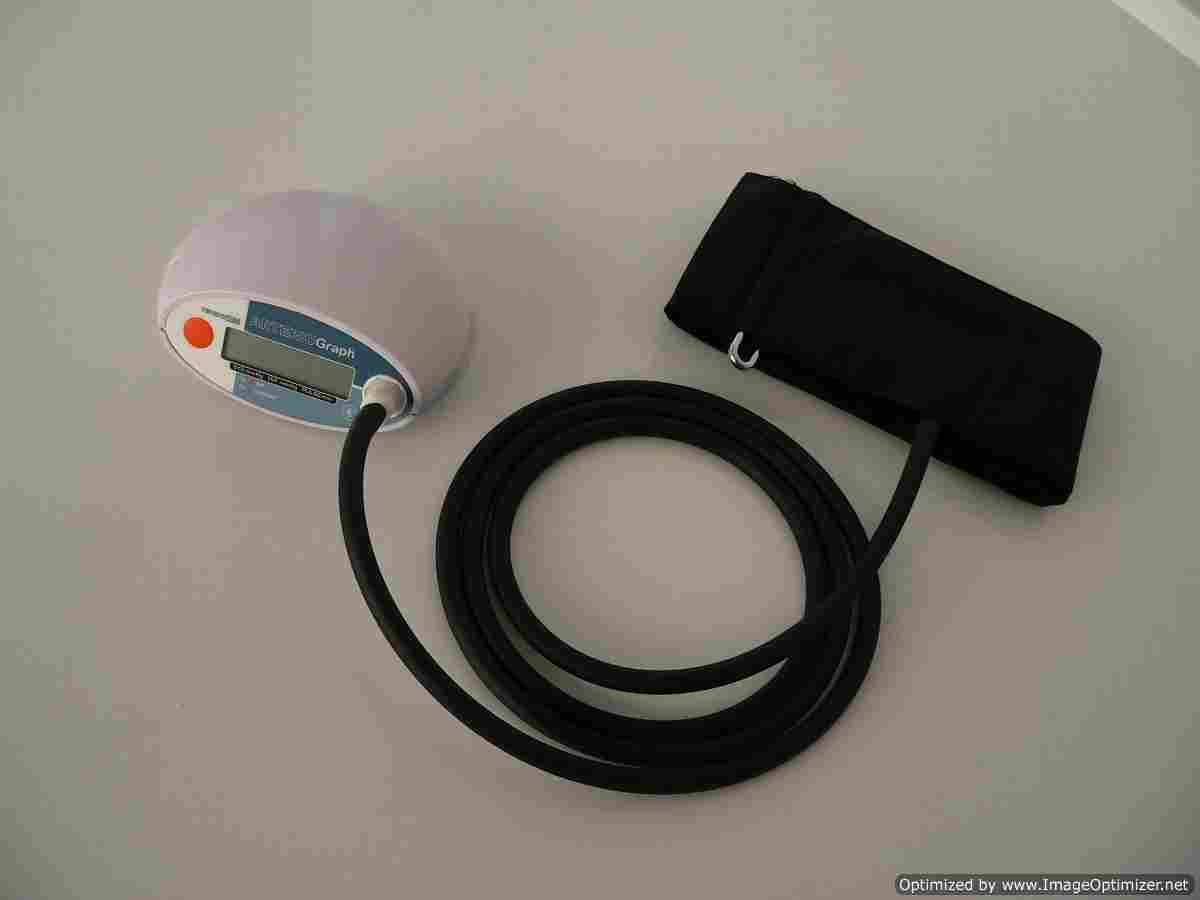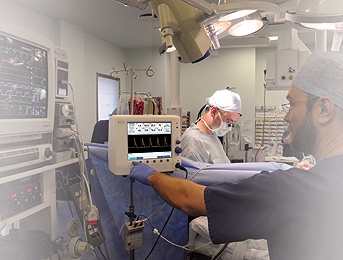THE market for cardiac patient monitoring devices market is growing, driven by unhealthy lifestyles, an ageing population, and the consequent increase in cardiovascular disease (CVD). But the main reason is growth in the demand for easy-to-use, patient-friendly devices that enable rapid and robust diagnoses of CVD, according to a recent report from Frost & Sullivan1.
Robert Clark, general manager of Draeger UK, says one of the major advances is the improvement in networking and the delivery of information. All of its patient monitoring devices are WiFi-enabled so patients can be monitored from wherever there is WiFi access in the trust.
Draeger’s Infinity M300 is a telemetry device which is worn by the patient and continues to communicate with a trust’s network via the Infinity CentralStation wherever the patient is in the hospital. It means the patient can continued to be monitored when they go to the physiotherapist or for tests. “This gives the patient more flexibility and, because it continues to monitor them, it can catch the episode that you want to capture,” Clark says.
At Derriford Hospital in Plymouth, where the trust uses Draeger’s Infinity Omega solution, patients are equipped with the telemetry device for a 24-hour assessment. Because the information has been gathered without a break and is captured online, where it can be accessed by the cardiologist, the patient no longer has to undergo a second session of monitoring when they go to the cardiologist.
“Hospitals are now re-thinking their care processes,” Clark comments.
Monitoring, therefore, has the potential to reduce mortality, complication rates, length of stay in critical care facilities and overall hospital stay, all of which indicates the possibility of significant improvements in patient care and a reduction in healthcare costs
Unimedic’s Arteriograph is a groundbreaking technology that has advanced the way cardiac monitoring is undertaken. Using a non-invasive catherisation method with the help of a single arm cuff, the Arteriograph takes two minutes to measure individual cardiovascular risk and evaluate the efficiency of applied therapy. The device provides information on central and peripheral blood pressure, endothelial function, arterial stiffness, arterial/heart age and cardiac fitness at the same time, showing the effects of cardiovascular risk factors on the arteries.

In mid September the company also launched the Arteriograph 24, an ambulatory device which will enable central blood pressure and arterial stiffness to be monitored over a 24-hour period. The device is the more-advanced version of the most accurate (BHS AA validated) and best value for money ambulatory blood pressure monitor on the market, the TensioDay ABPM, which comes with a professional software package. It is an idea solution for practices wanting to comply with the recommendations of the new NICE Hypertension Guideline for diagnosing high blood pressure.
Elsewhere, Welch Allyn has developed a range of cardiac patient monitoring devices, including equipment enabled for telemedicine. The provision of its CardioPerfect Workstation and ECG machine to Tyne Health Consortia in Newcastle has enabled ECGs to be carried out by GPs, and this has resulted in substantial savings for the PCT.

A pilot project on the use of the technology found that fewer than 15% of the ECGs conducted by GPs required a second opinion from secondary care. In a study it has published on the project, Welch Allyn explains: “The financial implications of this are considerable. With a lower number than originally planned for requiring secondary care intervention, overall analysis demonstrated that the cost of performing an ECG in primary care was approximately £34.50. This equates to a saving of approximately £52.50 per ECG compared with the open access system. Based on the number of ECGs carried out - 600 in tota -) during this seven-month period, savings of £31,500 have been realised.”
The six-month project began in July 2010 and the results were published in July 2011. As a result of its success, it may now be expanded across the whole of Newcastle as a local enhanced service. In addition, Welch Allyn says, the use of the CardioPerfect Workstation could be extended to look after data not just in the primary care environment, but also into secondary care, improving transmission of the data into secondary care and back again to the GP.
CardioPerfect Workstation is a data management system that enables data from cardiopulmonary testing (e.g resting and stress ECGs, spirometry, ambulatory blood pressure) to be easily acquired, analysed, stored and transmitted into a single patient record. It also has a telemedicine software option that enables diagnostic test data to be transferred from site to site.

Another cardiac monitoring technology that has been recognised for its value is the Deltex CardioQ, one of the technologies recommended by the NHS Technology Adoption Centre (NTAC) for use within the NHS. The CardioQ is an oesophageal Doppler monitoring technology primarily used to guide fluid management in major surgery. It monitors blood volume flow as well as response to fluid and drugs in intensive care. The CardioQ works in tandem with other cardiac monitoring technologies, helping to provide a more complete picture of how the heart is functioning.
In assessing the technology, the NTAC said: “The use of cardiac output monitoring allows blood flow status to be optimised, helping to maintain adequate blood supplies to the tissues. Monitoring, therefore, has the potential to reduce mortality, complication rates, length of stay in critical care facilities and overall hospital stay, all of which indicates the possibility of significant improvements in patient care and a reduction in healthcare costs.”
Awareness is growing in the NHS of the value that such technologies can bring to the diagnosis and treatment of cardiovascular disease. Although basic cardiac technologies such as ECGs and blood pressure monitoring continue to form the foundation of cardiac patient monitoring, the way they are delivered is constantly developing – bringing cost savings to the NHS and better care for patients.
Reference
1. Frost & Sullivan press release, ‘Expanding Patient Pool Ensures Stable Growth for the European Cardiac Patient Monitoring Market, Says Frost & Sullivan’, 13 July 2011
